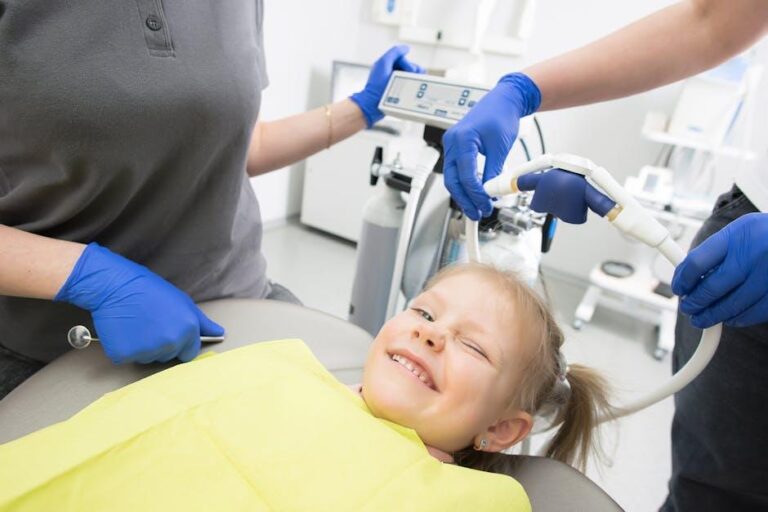1 in 3 Kids Has Dental Problems, Poll Finds – U.S. News & World Report
Recent polls reveal a concerning statistic: one in three children in the United States currently suffers from dental problems. This alarming trend sheds light on the growing challenge of pediatric oral health and underscores the need for increased awareness, preventive care, and timely dental treatment. In this comprehensive article, we will explore the scope of this issue, the primary causes, and practical tips that parents and caregivers can use to ensure healthier smiles for their kids.
Understanding the Scope of Pediatric Dental Problems in the U.S.
The poll conducted by prominent health organizations and published by U.S. News & World Report highlights that approximately 33% of U.S. children aged 2-17 experience some form of dental issues. These range from cavities and tooth decay to gum conditions and enamel erosion, all of which can seriously impact a child’s overall health, well-being, and confidence.
Common Types of Dental Problems Affecting Kids
- Dental Cavities: The most common chronic childhood disease caused by bacteria and poor oral hygiene.
- Gingivitis: Early gum disease leading to inflammation, swelling, and sometimes bleeding gums.
- Tooth Sensitivity & Enamel Erosion: Resulting from acidic foods and poor brushing habits.
- Malocclusion: Misalignment of teeth affecting bite and jaw function.
Key Causes of Dental Problems in Children
Understanding what leads to these dental problems is essential for prevention and management. Here are the primary causes contributing to dental issues in children today:
- Poor Oral Hygiene: Inadequate brushing and flossing increase plaque buildup and cavities.
- Unhealthy Dietary Habits: Excessive consumption of sugary snacks, sodas, and acidic drinks.
- Lack of Regular Dental Checkups: Delayed or skipped visits limit early detection and treatment.
- Socioeconomic Factors: Limited access to dental care and education in underserved communities.
- Fluoride Deficiency: Insufficient fluoride protection can reduce enamel strength.
Dental Health Statistics at a Glance
| Factor | Percentage Impact | Notes |
|---|---|---|
| Poor Oral Hygiene | 45% | Leading contributor to cavities |
| High Sugar Intake | 40% | Increases risk of decay |
| No Regular Dental Visits | 35% | Delays treatment, worsens condition |
| Socioeconomic Barriers | 30% | Limits access and awareness |
| Fluoride Deficiency | 15% | Weakens enamel resistance |
Why Pediatric Dental Health Matters
Good oral health in children goes far beyond just a bright smile. It directly affects their:
- Nutrition: Painful teeth can discourage proper eating and impact growth.
- Speech Development: Healthy teeth are critical for proper speech formation.
- Social Confidence: Dental problems can lead to self-esteem challenges among peers.
- Overall Health: Untreated dental infections may contribute to systemic health issues.
Practical Tips for Preventing Dental Problems in Children
Prevention is the best strategy when dealing with pediatric dental health. Consider these expert-backed tips to protect your child’s smile:
- Start Early: Begin cleaning your baby’s gums and teeth as soon as they appear.
- Brush Twice Daily: Use fluoride toothpaste and a soft-bristle toothbrush suitable for your child’s age.
- Limit Sugary Foods & Drinks: Reduce candy, soda, and juice intake, focusing on water and healthy snacks.
- Regular Dental Checkups: Schedule visits every six months, or as recommended by your pediatric dentist.
- Educate Your Child: Teach proper brushing and flossing techniques early on, making it fun and rewarding.
- Fluoride Treatments: Consult your dentist about fluoride varnishes and supplements as needed.
Sample Daily Dental Care Routine for Kids
| Time | Activity | Tips |
|---|---|---|
| Morning | Brush Teeth | Brush for 2 minutes, fluoride toothpaste |
| After Lunch | Rinse Mouth or Brush | Water rinse; brush if possible |
| Evening | Brush & Floss | Clean teeth thoroughly before bed |
Case Study: Improving Dental Health in a Community Setting
A recent community-based dental program in Texas focused on educating parents and providing free dental screenings showed a 25% reduction in untreated cavities within a year among participating children. The initiative emphasized early dental visits, proper hygiene techniques, and nutritional counseling, reinforcing the power of community support in combating pediatric dental problems.
First-Hand Experience: A Parent’s Perspective
Maria Gomez, a mother of two from California, shares her journey: “I never realized how serious dental health was until my youngest needed a root canal at age six. After that scare, we made regular dentist visits a priority and changed our diet at home. Now, both my kids enjoy brushing their teeth and we’ve had no problems for two years!”
Conclusion
The statistic that 1 in 3 kids in the U.S. faces dental problems should serve as a wake-up call for parents, educators, and health professionals alike. Good pediatric dental health requires proactive effort—from daily care habits to early and regular dental assessments. Together, we can reduce these numbers by fostering healthier routines, improving access to care, and educating families on the importance of oral hygiene.
If you’re a parent or caregiver, take small steps today that make a large difference tomorrow. After all, a healthy smile is a lifelong gift.


